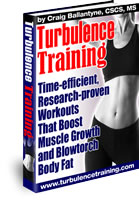The Body Sculpting Guide for Busy People
 Time is a precious resource these days and because of this, most people simply don’t have 90-minutes per day to devote to a workout.
Time is a precious resource these days and because of this, most people simply don’t have 90-minutes per day to devote to a workout.
Unfortunately, with all the information fitness magazines are spewing out, many people are often misguided into believing the only sure-fire way to lose fat and gain muscle is through long, hard workouts, lasting well over an hour in length.
Luckily, we don’t need to believe everything the fitness magazines are telling us, because some of what they are saying simply isn’t accurate!
With over 15 years experience helping others, training myself, training for sports, spending countless hours in the gym, AND actually conducting laboratory research studies on different exercise methods, I’m pretty confident in knowing what works and what doesn’t.
And I can confidently say that there is ZERO reason to be spending 90 minutes, five to six days a week working out, when you can easily get the same fat loss results in just half the time.
Let me explain…
The great thing about strength training and intervals is “efficiency”. Because you are working harder, the signal to your body to change is stronger.
RESULT: You cut time when you increase intensity.
Now don’t worry, I won’t be asking you to do hill sprints tomorrow if you aren’t exercising today.
For a beginner, we just do some slightly faster than normal walking intervals. For intermediate fitness levels, we’ll pick up the pace about 20% compared to their normal cardio levels, but again, the work periods are much shorter.
The key is you must shift to a slightly higher intensity in order to cut time from your workout. But the workout also goes faster, and much more importantly, you will get more results and better fitness from these methods.
So for you busy people out there – it’s easy to do these workouts first thing in the AM, or at lunch, or after the kids go to bed.
And another BONUS, you only need three hard workouts per week. You don’t have to be in the gym six days per week.
On your off days, it’s important to stay active for at least 30 minutes, but these days should be unstructured and revolve around being active with your family or hobbies. Don’t think of them as workout days, think of them as activity days.
Plus, you can get a great workout at home with only a bench, dumbells, and an exercise ball. You DON’T NEED fancy machines or an expensive gym membership.
Which leads into Turbulence Training.
Over the years, many people have come across my fat loss workout programs and two of the most commonly asked questions I get are: “What is Turbulence Training?” and “How is this program different from all the others?”.
So, let me take a minute to break TT down for you…
What is Turbulence Training?
Turbulence Training is the fat loss system you might have read about in Men’s Health, Men’s Fitness, or Shape magazine. In fact, the June 07 issue of Men’s Health contains two of my short, but effective fat loss and interval tips.
Who can use TT and what are its benefits?
Turbulence Training was designed for busy men and women (yes, women use it just as well as men) to get more fat loss results in less workout time. It’s about creating fewer workout days and more time out of the gym to spend living your life.
What are the advantages and features of TT?
The workouts are designed for simple home gyms, requiring very little equipment. And most importantly, they are meant to be done fast. I’ve cut the fluff, and used only the most efficient and effective exercises.
Too many magazine programs recommend redundant exercise programs, telling you to do four exercises when one will be enough. Or well-meaning, but incorrect articles brainwash us into believing that we have to run for an hour per day or we’ll end up in poor health.
But that’s not true. (The truth is; nutrition is far MORE important for fat loss and health than your choice of exercise.)
=> Click here to get Turbulence Training for less than 5 bucks.
Stay strong,
Craig Ballantyne, CSCS, MS
Author, Turbulence Training